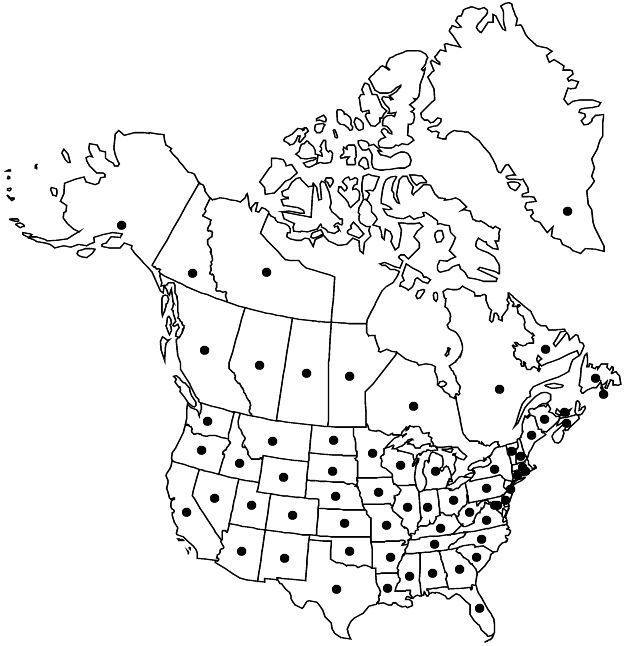Difference between revisions of "Polygonum aviculare"
Sp. Pl. 1: 362. 1753.
RevisionBot (talk | contribs) m (Bot: Adding category Revision Pending) |
RevisionBot (talk | contribs) m (Bot: Adding category Revised Since Print) |
||
| (One intermediate revision by one other user not shown) | |||
| Line 120: | Line 120: | ||
|publication year=1753 | |publication year=1753 | ||
|special status=Weedy;Illustrated | |special status=Weedy;Illustrated | ||
| − | |source xml=https:// | + | |source xml=https://bitbucket.org/aafc-mbb/fna-data-curation/src/2e0870ddd59836b60bcf96646a41e87ea5a5943a/coarse_grained_fna_xml/V5/V5_1136.xml |
|subfamily=Polygonaceae subfam. Polygonoideae | |subfamily=Polygonaceae subfam. Polygonoideae | ||
|genus=Polygonum | |genus=Polygonum | ||
| Line 131: | Line 131: | ||
[[Category:Treatment]] | [[Category:Treatment]] | ||
[[Category:Polygonum sect. Polygonum]] | [[Category:Polygonum sect. Polygonum]] | ||
| − | [[Category: | + | [[Category:Revised Since Print]] |
Latest revision as of 17:09, 6 November 2020
Plants green or bluish green, green after drying, sometimes whitish from powdery mildew, homophyllous or heterophyllous. Stems prostrate to erect, branched, flexuous, 5–200 cm. Leaves: ocrea 3–15 mm, proximal part cylindric or ± funnelform, distal part silvery, hyaline, soon disintegrating into persistent fibers or nearly completely deciduous; petiole 0.3–9 mm; blade green to gray-green, narrowly elliptic, lanceolate, elliptic, obovate, or spatulate, 6–50(–60) × 0.5–22 mm, margins flat, apex acute, obtuse, or rounded; stem leaves 1–4 times as long as adjacent branch leaves; distal leaves overtopping flowers. Inflorescences axillary; cymes uniformly distributed or aggregated at tips of stems and branches, 1–6(–8)-flowered. Pedicels enclosed in or exserted from ocreae, 1.5–5 mm. Flowers closed or semi-open; perianth 1.8–5.5 mm; tube 20–57% of perianth length; tepals overlapping or not, green or reddish brown with white, pink, or red margins, petaloid, not keeled, oblong to obovate, often cucullate in fruit; midveins branched or unbranched, thickened or not; stamens 5–8. Achenes enclosed in or exserted from perianth, light to dark brown, ovate, (2–)3-gonous, 1.2–4.2 mm, faces subequal or unequal, apex not beaked, edges slightly concave, dull, usually coarsely striate-tubercled, sometimes obscurely tubercled; late-season achenes common or not, 2–5 mm.
Distribution

Alta., B.C., Man., N.B., N.S., N.W.T., Nfld. and Labr., Ont., P.E.I., Que., Sask., Yukon, Ala., Alaska, Ariz., Ark., Calif., Colo., Conn., D.C., Del., Fla., Ga., Idaho, Ill., Ind., Iowa, Kans., Ky., La., Maine, Mass., Md., Mich., Minn., Miss., Mo., Mont., N.C., N.Dak., N.H., N.J., N.Mex., N.Y., Nebr., Nev., Ohio, Okla., Oreg., Pa., R.I., S.C., S.Dak., Tenn., Tex., Utah, Va., Vt., W.Va., Wash., Wis., Wyo., nearly worldwide.
Discussion
Subspecies 7+ (6 in the flora).
Polygonum aviculare is a taxonomically controversial polyploid complex of selfing annuals. Although members of the complex have been considered inbreeders, they possess some structures that make cross pollination possible. Cleistogamous and chasmogamous flowers, heterostyly, protandry, and the capacity to secrete nectar suggest an ancestral mixed-mating system. Isoenzyme studies showed that the complex has an allopolyploid origin (P. Meerts et al. 1998) and has evolved as a swarm of inbreeding lines (“Jordanons”) (J. Gasquez et al. 1978). The six subspecies included here have been treated variously (T. Karlsson 2000; M. Costea and F. J. Tardif 2003). Complex intergradation patterns among them make their recognition at the species level impractical. Multivariate analysis and isoenzyme studies show that populations with intermediate characteristics may occur (Meerts et al. 1990, 1998). Except for subsp. boreale, which occurs in Greenland and Labrador, all subspecies are partially sympatric and their distributions have been influenced greatly by humans.
Selected References
Lower Taxa
Key
| 1 | Perianth tubes 40-57% of perianth length | > 2 |
| 1 | Perianth tubes (15-)20-40(-42)% of perianth length. [3. Shifted to left margin.—Ed.] | > 3 |
| 2 | Tepals green or reddish brown, margins white, veins unbranched | Polygonum aviculare subsp. depressum |
| 2 | Tepals green, margins usually pink or red, rarely white, veins branched | Polygonum aviculare subsp. neglectum |
| 3 | Perianths 3.3-5.5 mm; achenes 2.5-4.2 mm | > 4 |
| 3 | Perianths 1.9-3.6 mm; achenes 1.2-2.8(-3) mm | > 5 |
| 4 | Plants heterophyllous; leaf blades elliptic to oblanceolate; tepals oblong, cucullate in fruit; cymes aggregated at tips of stems and branchs; broad distribution in North America | Polygonum aviculare subsp. aviculare |
| 4 | Plants homophyllous or subheterophyllous; leaf blades obovate-spatulate or oblanceolate; tepals obovate, flat or curved outward in fruit; cymes ± uniformly distributed; Greenland, Newfoundland and Labrador | Polygonum aviculare subsp. boreale |
| 5 | Ocreae with distal parts relatively persistent, silvery; perianths 0.9-1.3(-1.5) times as long as wide, outer tepals pouched at base | Polygonum aviculare subsp. buxiforme |
| 5 | Ocreae soon disintegrating into persistent fibers or leaving almost no fibrous remains; perianths 1.5-2.9 times as long as wide; outer tepals not pouched at base | > 6 |
| 6 | Leaf blades (6-)10-20 mm wide, 2-4.5 times as long as wide; cymes 3-8-flowered, aggregated at tips of stems and branches; achenes enclosed in or barely exserted from perianth | Polygonum aviculare subsp. aviculare |
| 6 | Leaf blades 0.5-6.8(-8) mm wide, (3.4-)4.2-15(-19) times as long as wide; cymes 1-3(-5)-flowered, uniformly distributed along stems and branches; achenes usually exserted from perianth | > 7 |
| 7 | Ocreae 4-8 mm, veins inconspicuous, distal parts leaving almost no fibrous remains; lateral veins of leaf blades visible but not raised adaxially | Polygonum aviculare subsp. neglectum |
| 7 | Ocreae (6-)8-12 mm, veins conspicuous, distal parts disintegrating into persistent fibers; lateral veins of leaf blades raised adaxially | Polygonum aviculare subsp. rurivagum |